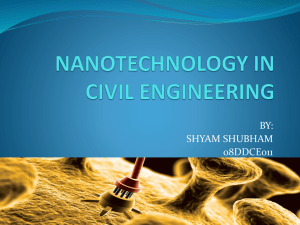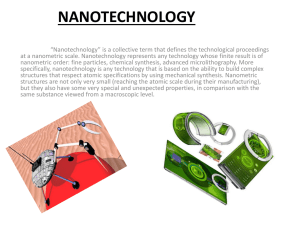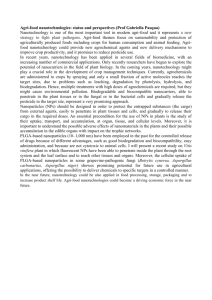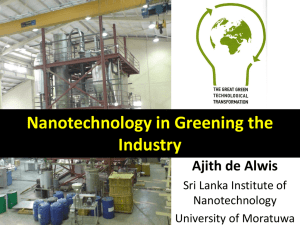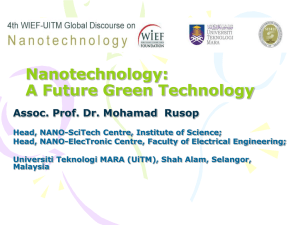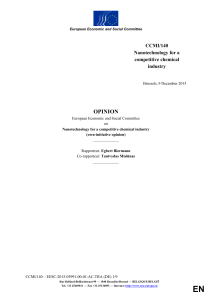event summary
advertisement
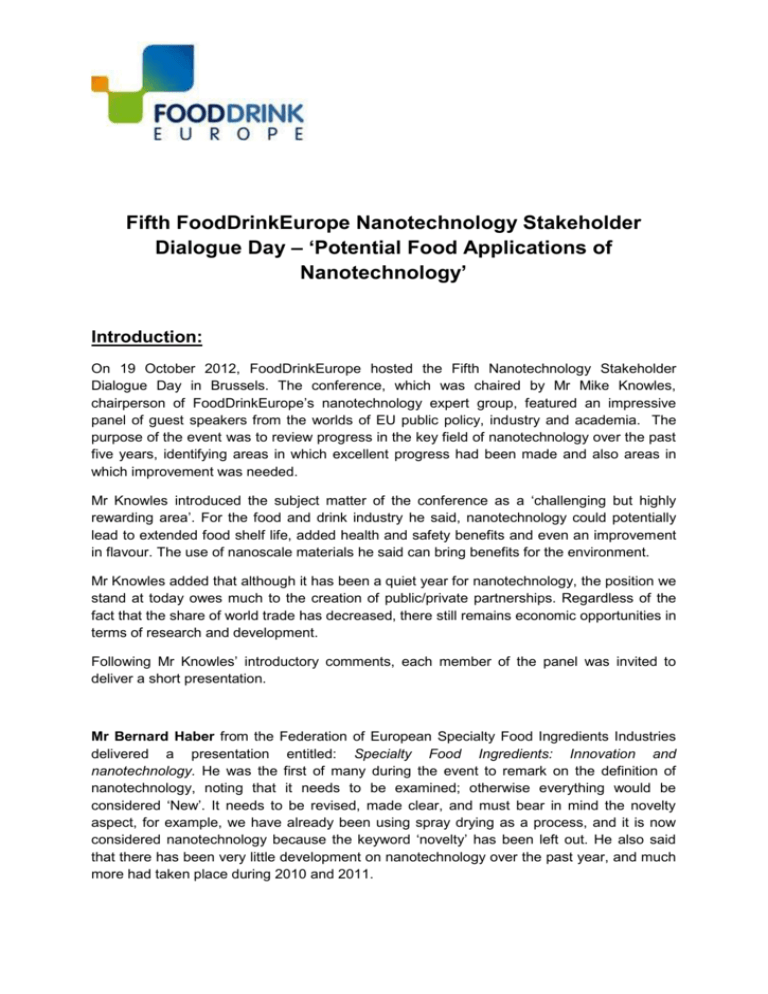
Fifth FoodDrinkEurope Nanotechnology Stakeholder Dialogue Day – ‘Potential Food Applications of Nanotechnology’ Introduction: On 19 October 2012, FoodDrinkEurope hosted the Fifth Nanotechnology Stakeholder Dialogue Day in Brussels. The conference, which was chaired by Mr Mike Knowles, chairperson of FoodDrinkEurope’s nanotechnology expert group, featured an impressive panel of guest speakers from the worlds of EU public policy, industry and academia. The purpose of the event was to review progress in the key field of nanotechnology over the past five years, identifying areas in which excellent progress had been made and also areas in which improvement was needed. Mr Knowles introduced the subject matter of the conference as a ‘challenging but highly rewarding area’. For the food and drink industry he said, nanotechnology could potentially lead to extended food shelf life, added health and safety benefits and even an improvement in flavour. The use of nanoscale materials he said can bring benefits for the environment. Mr Knowles added that although it has been a quiet year for nanotechnology, the position we stand at today owes much to the creation of public/private partnerships. Regardless of the fact that the share of world trade has decreased, there still remains economic opportunities in terms of research and development. Following Mr Knowles’ introductory comments, each member of the panel was invited to deliver a short presentation. Mr Bernard Haber from the Federation of European Specialty Food Ingredients Industries delivered a presentation entitled: Specialty Food Ingredients: Innovation and nanotechnology. He was the first of many during the event to remark on the definition of nanotechnology, noting that it needs to be examined; otherwise everything would be considered ‘New’. It needs to be revised, made clear, and must bear in mind the novelty aspect, for example, we have already been using spray drying as a process, and it is now considered nanotechnology because the keyword ‘novelty’ has been left out. He also said that there has been very little development on nanotechnology over the past year, and much more had taken place during 2010 and 2011. Thomas Schalkhammer from ATTOPHONICS spoke on the subject of Innovation and nanotechnology – Smart Colours – Food safety aspects and anti-counterfeiting. He remarked that the potential application of nanotechnology both within and outside the food industry was discussed, with particular reference made to nano-coating oil fitting equipment, which allows alteration to surface properties. It was stressed that nano products are not equivalent to nano materials. Of importance to the food and drink industry he said, is the application of nanotechnology for packaging. One such technology involves putting a nano-engineered colour changing patch on the packaging of bread. This would be sensitive to humidity and would change colour, reddening as the product begun to expire. Veronique Garny from CEFIC delivered a presentation entitled Cross Industry Platform – Working Together. She pointed out that the Cross Industry Platform (CIP), assembled in 2009, has been focussing recently a lot of their attention on a definition of nanotechnology. They are currently working on a report, which deals with the question ‘is Nano going to be the next asbestos problem’? CIP have also found that there is a problem with the measuring technique currently employed and there is a need to agree on a standard method. She remarked that that they are hopeful REACH will allow for some changes to the annex. A call for everyone to speak up on this topic was made. Georgis Katalangarianakis from the European Commission’ DG Research & Innovation spoke on the topic of Nano-EHS activity and strategy in the EU. A number of projects he said are being carried out by DG Research, of which there are a handful that are of particular interest to the food and drink industry, such as NMP 2011-1.3-1, new methods for measuring, detection and identification of nanoparticles in products, which was recently launched. Other projects of interest address that of food packaging. He pointed out that any risk that exists is not necessarily always associated with the product, but rather for the employees working during the production process, who must ensure they follow the safety process strictly. EU Research holds meetings on Nano safety, in which an open invitation exists. Stefan Weigel of RIKILT presented on the topic of Nanoparticles in food – Analytical methods for detection and characterisation. The work undertaken by Nanolyse, which focuses centrally on food safety, was presented. It falls under the FP7 – Project scheme and will last until September 2013 (having begun in early 2010). Most projects taken on by Nanolyse are at least in the validation stage, if not already validated. The tasks that each of 2/4 the 4WPs (Reference materials in matrix, imaging, screening, inorganic NP) carried out were identified. David Carlander of ILSI spoke on the issue of NanoRelease Food Additive. This presentation complimented the previous one by Mr Weigel, focusing on the ILSI NanoRelease Food Additive project. This public private partnership, with a multi-national steering committee has five expert task groups formed to deal with different issues, such as Material Characteristics, Alimentary Canal Models and Regulatory Aspects. However it shares a common goal, to identify and develop measurement methods for ingested nanoparticles to determine whether they are likely to be taken up by the body. The progress made by each of the TGs was also outlined. Hermann Stamm from JRC delivered a presentation entitled Analytical methods for nanomaterials in Food Progress in developing testing methods. The work of the JRC he said, focuses on nanomaterials in consumer products (detection etc.) and safety assessment of nanomaterials. It was noted that many issues are present when determining the particle size. Possible methods such as that of ‘Ensemble’ and ‘Fractionation’ were assessed. Furthermore there is no standard method which can deal with all types of nanomaterials, aggregates being the most difficult with only one method available, x-ray diffraction. Issues on Inter Laboratory testing and validation (how not to get lost) were also examined. With this said he mentioned, one must also bear in mind the challenges faced, such as sampling and sample preparation. Peter Ide-Kostic from the European Parliament’s Science and Technology Options Assessment Unit (STOA) explained that his unit concentrates its efforts on a scientific, interactive and communicative process that aims to contribute to the formation of public and political opinion on societal aspects of science and technology. STOA he said, has published a few notable studies such as that of ‘The Role of Nanotechnology (NT) in Chemical Substitution: April 2007’, and more recently ‘Nanosafety – Risk Governance of manufactured of nanoparticles. March 2012.’ Alexandra Nikolakopoulou (& Jean Francois Roche) from the European Commission’s DG Health and Consumers dealt primarily with the definition that is to be implemented on 13/14th December 2014. 3/4 It was made abundantly clear that the current definition is subject to change. It does not reflect the intentions of DG SANCO labelling unit, but rather it is a result of pressure and time and may take longer to alter due to New Commission Proposal. Lynn Frewer of Newcastle University’s Centre for Rural Economy (CRE) delivered a presentation entitled ‘Consumer and citizen acceptance of new food technologies’, the last presentation of the conference. Different types of risk were studied, alongside societal responses to technological innovation in the agrifood sector. Panel Discussion & Conclusion Following the presentations by each individual speaker, a panel discussion took place, during which both analytical and labelling challenges were discussed. Analytical Challenges: Not all panellists were of the opinion that no additional equipment is needed for testing nanomaterial. The importance of the availability of validated testing methods alongside with appropriate sampling and sample preparation was once again highlighted. Labelling Challenges: The Commission is aware of the challenge of labelling nanomaterial, given the current status of definition. An amendment of the nanomaterial definition as currently included in Regulation 1169/2011 on consumer information exists. Panellists confirmed the inappropriateness of the current definition to establish meaningful labelling rules. 4/4

